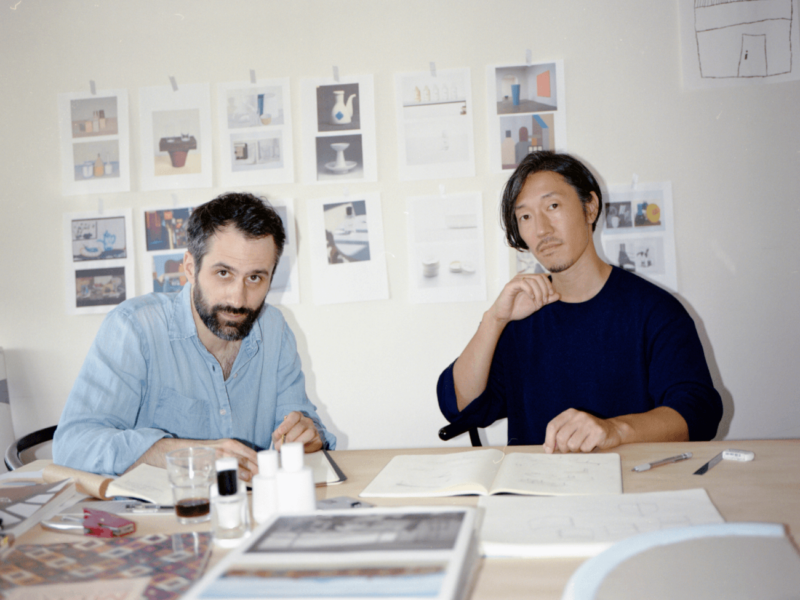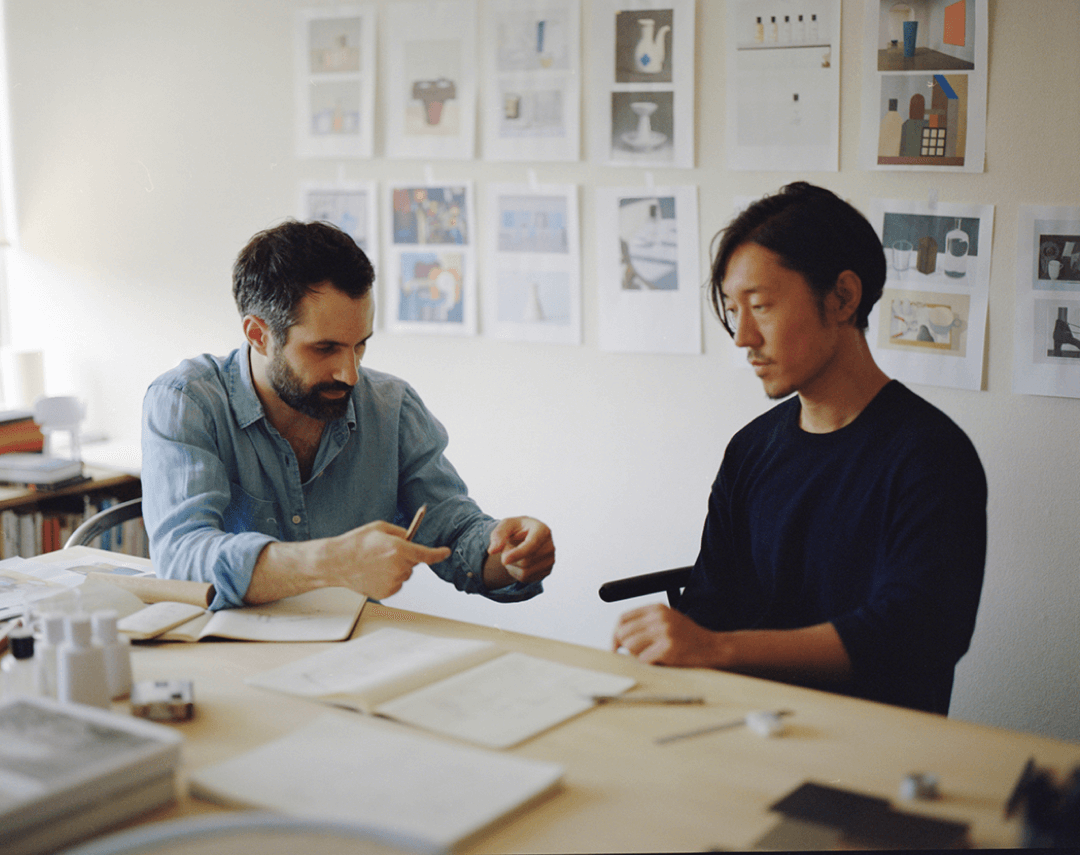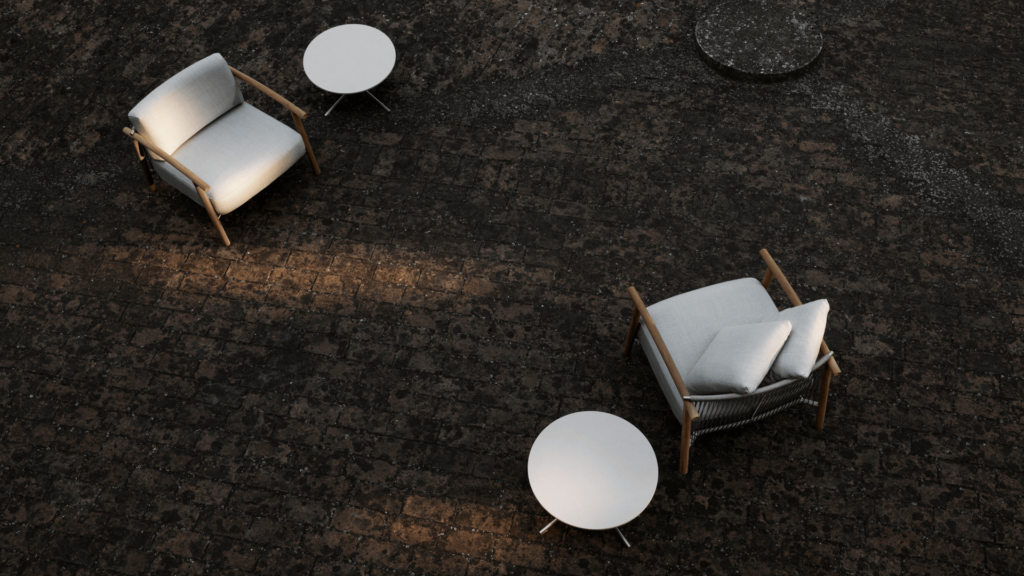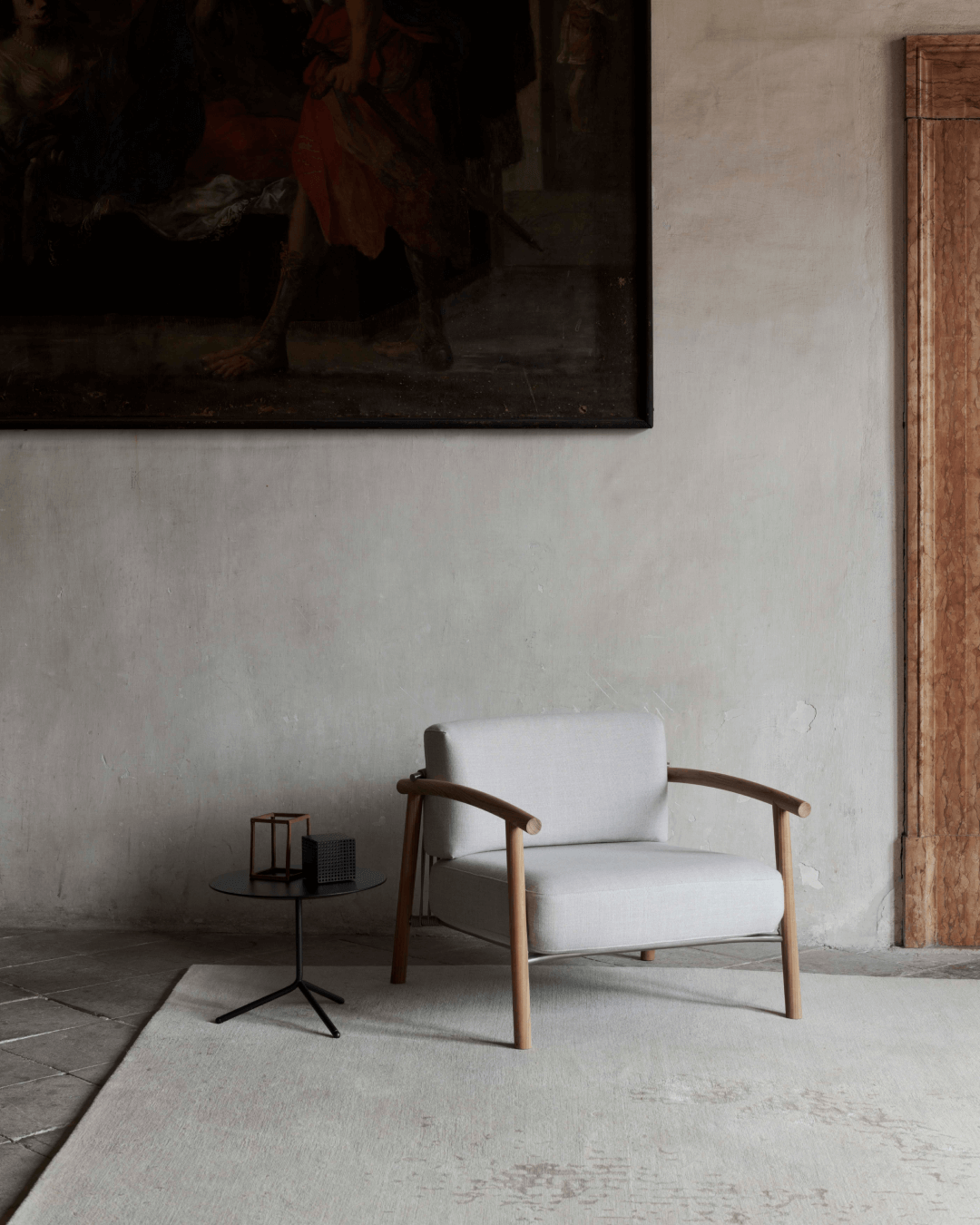Discover our e-shop and access a digital catalogue of over 40.000 design products.
Go to shop2 April 2025

The founders of Mist-o studio talk about their latest collaborations: not just furniture but also product design in the cosmetics field.
Mist-o studio is the meeting point between Italy and Japan, not only because of the origins of its founders but also because they themselves chose to have two offices: Milan and Tokyo. There are no geographical limits to their work and the type of product they embrace is also very broad. Among the latest collaborations they talk about the one with Living Divani for the Kasumi collection and its extension that will be presented at the Salone del Mobile, with Zanotta for the Daisy seat and the Ambrosiano table and the cosmetics brand Shiro.
What is your background and also your vocation, in terms of type of project to which you feel most individually akin?
We both studied Industrial Design in Milan, where we met, and then worked for several years in different design and architecture studios. Noa spent several years in David Chipperfield’s Milanese studio. Afterwards, we participated in two editions of Salone Satellite, an experience that allowed us to define our vision of the project, meet people and lay the foundations for the opening of our studio in 2012. From the beginning, we worked on different fronts, mainly in furniture and product design, but also in project communication—from graphics to image direction. We have always given great importance to this aspect, personally photographing our works from the beginning to tell their story in an authentic and rhetorical way, bringing out the spirit of the studio and our point of view.


The Kasumi collection for Living Divani now also includes a sofa and coffee tables: what is your idea of outdoor living and how did you translate it into this collection in particular?
The boundary between indoor and outdoor is becoming increasingly thin, as demonstrated by the products launched in recent years and the evolution of companies, increasingly inclined to integrate outdoor solutions into their indoor collections.
This indicates a clear demand from the market, and therefore from people, for outdoor spaces with the same quality, care and attention reserved for interiors. Beyond the technical aspects related to materials and technologies resistant to atmospheric agents or perhaps to a more intense use of the product, the design approach remains the same as for indoor: attention to detail, attention to taste and the search for refinement. However, an outdoor product relates to different elements than those of an interior. It can be immersed in nature, among gardens, trees, grass, water, or simply on a terrace, where the visual context is in any case different from that of a living room.

We believe that an outdoor product must fit discreetly into the natural context, bringing its own character and style without overwhelming it, but dialoguing in harmony with the environment. Kasumi was born from this reflection: a collection designed to integrate harmoniously into outdoor spaces, where lightness and materiality are the key elements. While adapting to the outdoors, it preserves the comfort, elegance and care of shapes and materials typical of indoor furniture.

In the collaboration with Zanotta, how did you find yourself in tune with the history and personality of the company and what did you bring of your own?
The harmony comes from the fact that Zanotta has always placed the product at the center, enhancing the peculiarities of each author; an approach typical of Italian design, which today is evolving but which still resists in some situations. More than following an idea of lifestyle, Zanotta has always favored design and innovation. While transforming over time and taking on a different appearance compared to the past, it continues to maintain its original spirit, adapting with balance to contemporary needs, creating products that can live independently, but also integrate with each other to give life to a unique atmosphere, representative of the Zanotta spirit.
In our work, we have tried to develop projects in continuity with the company’s tradition, with a strong design, construction and cultural thought, but reinterpreting them in a contemporary way. An example is the Ambrosiano table, which reinterprets the typology of the trestle work table, already addressed by Zanotta, as in the Bramante table by Castiglioni, making it more efficient and scalable. The result is a versatile system, capable of adapting to both domestic spaces and work environments.


In your collaboration with Shiro, what kind of approach did you have in that type of project?
It was our first experience with a company in the cosmetics sector, and it was a very interesting project. We worked on different types of products: from perfume bottles to make-up products, to more lifestyle objects, such as containers for home fragrances, and much more. Although the cosmetics sector is close to the world of fashion, the design of these products requires a very technical and rational approach. It is a real product design, similar to that of devices such as mobile phones or computers, especially when it comes to make-up products.
Although the creative component is fundamental, the real challenge lies in the execution. You have to work with extreme precision, respecting strict cost constraints, without compromising the idea or the form. These products are made in large quantities, require investments in machinery and molds, and the design must be to the tenth of a millimeter. It is a very complex process, but it has offered us an important learning opportunity, teaching us how to manage and ensure quality in projects of this type.
The Milan Furniture Fair is approaching, is there any preview you can share with us regarding the presence of your new projects?
The Kasumi collection, already previewed at the Living Divani Gallery, will be officially presented at the Salone del Mobile. In addition, we are working on a new collection of containers in collaboration with another Italian company. However, since it is still in the design phase, we prefer to wait before going into details.
Photo credit: for portraits Francisca Derqui, for products Tommaso Sartori; Alberto Strada; studio Mist-o